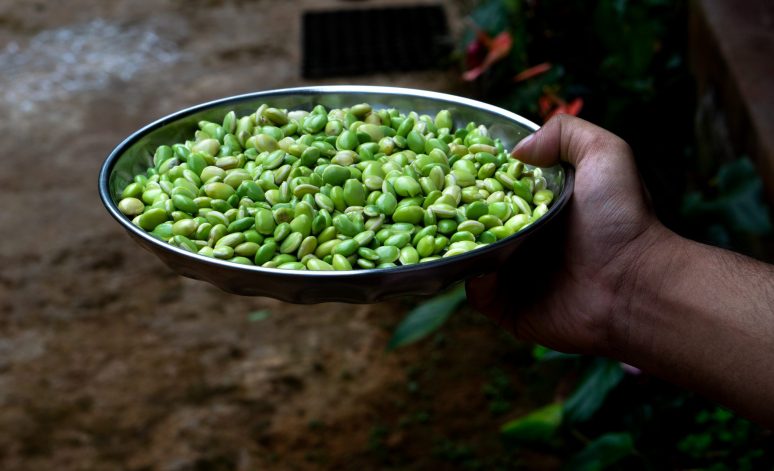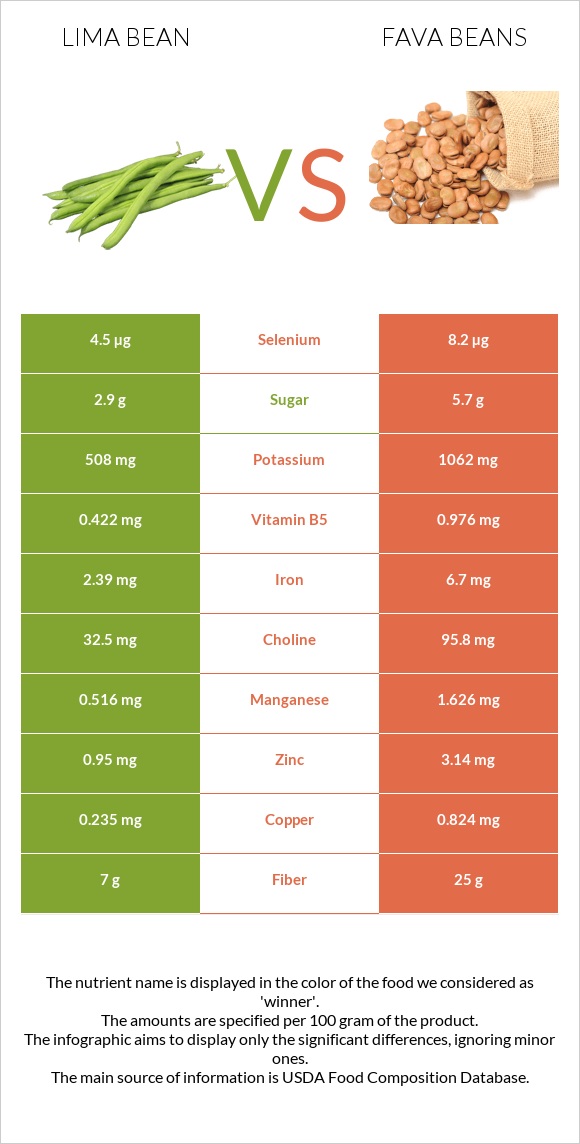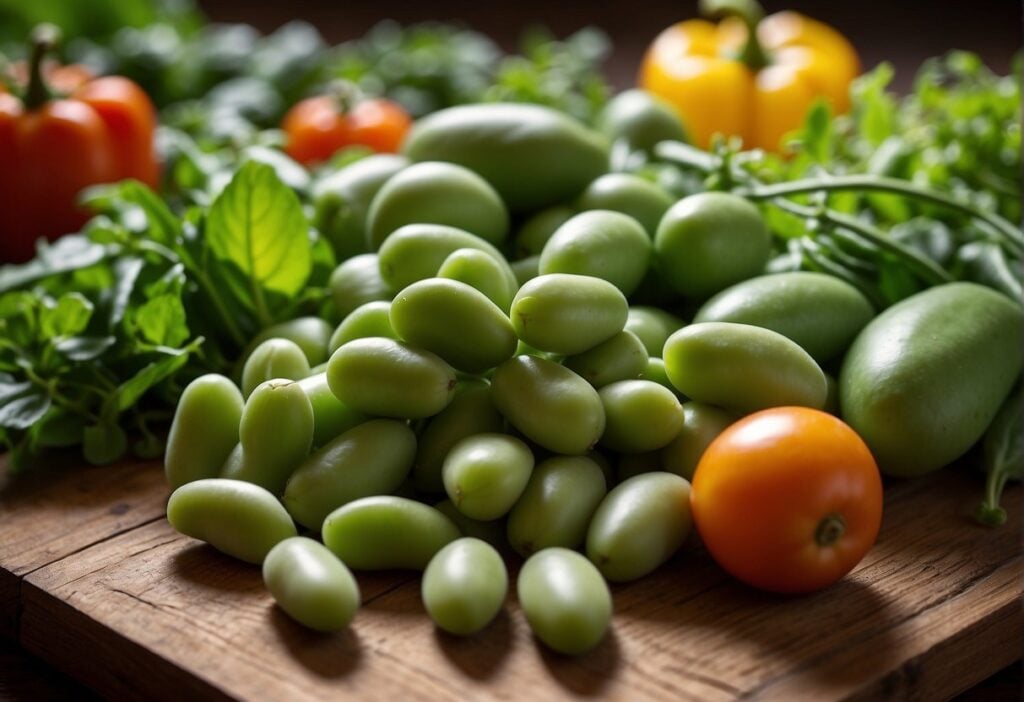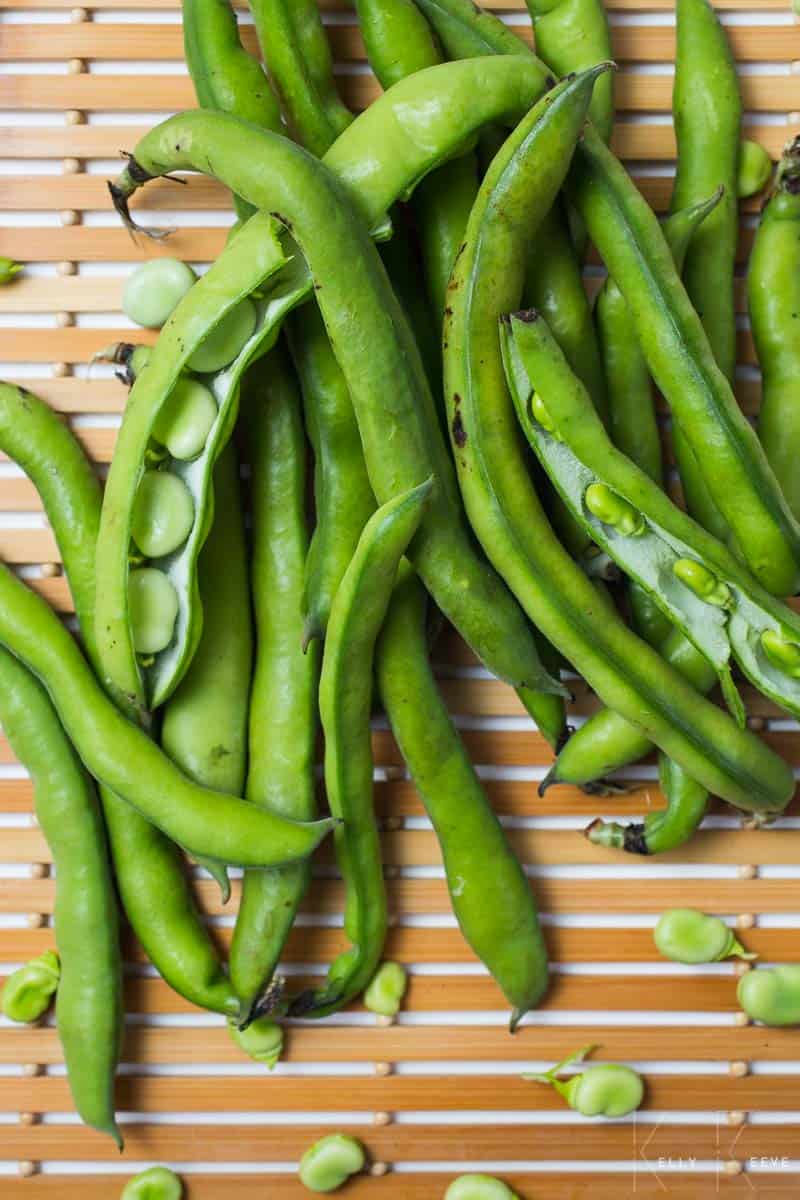Introduction

Legumes, such as Lima beans and Fava beans, are a diverse group of plants that offer a wealth of nutritional benefits. These leguminous crops have been cultivated worldwide for centuries and have become important staples in various cuisines. Their versatility and health-promoting properties make them a popular choice for both vegetarians and non-vegetarians alike. In this article, we will explore the characteristics, nutritional value, and culinary uses of Lima beans and Fava beans. By comparing these two legumes, you can discover which one suits your dietary needs and preferences. So, let’s delve into the world of Lima beans and Fava beans and embrace the diversity of legumes.
Importance And Nutritional Value Of Legumes
Legumes, including Lima beans and Fava beans, hold immense significance in a healthy diet due to their exceptional nutritional value. These leguminous crops serve as excellent sources of plant-based protein, dietary fiber, and essential vitamins and minerals. They are also low in fat and cholesterol while being rich in complex carbohydrates. Legumes offer numerous health benefits, such as promoting heart health, aiding in digestion, and managing weight. Additionally, legumes contribute to sustainable agriculture and play a crucial role in soil fertility by fixing nitrogen. Including legumes in your meals can enhance overall nutrition and contribute to a balanced and sustainable diet.
Overview Of Lima Beans And Fava Beans
Lima beans and Fava beans are both popular legumes that offer a range of nutritional benefits. Lima beans, also known as butter beans, are small, flat, and creamy in color. They have a mild, delicate flavor and a smooth texture. On the other hand, Fava beans, also called broad beans, have a larger size and a distinct earthy taste. They are firm and starchy when cooked. Both legumes are packed with protein, fiber, vitamins, and minerals, making them excellent additions to a healthy diet. Whether you prefer the creamy texture of Lima beans or the hearty bite of Fava beans, incorporating these legumes into your meals can contribute to a balanced and nutritious diet.
Lima Beans: A Closer Look

Lima beans, also known as butter beans, are small, flat legumes that have a creamy texture and delicate flavor. They are typically pale green or white in color. Lima beans are packed with nutrients, including protein, fiber, vitamins (such as folate and vitamin C), and minerals (such as potassium and magnesium). They are also low in fat and calories. These beans are a great source of plant-based protein and are often used as a substitute for meat in vegetarian or vegan dishes. Lima beans can be enjoyed in soups, stews, salads, or as a side dish. They provide a satisfying and nutritious addition to any meal.
Characteristics And Appearance Of Lima Beans
Lima beans, also known as butter beans, are small, flat legumes with a distinct shape and texture. They are typically pale green or white in color, although there are also varieties that come in shades of cream, brown, or purple/red. Lima beans have a smooth exterior and a creamy interior when cooked. They are slightly larger in size compared to other legumes and have a tender yet firm texture. The shape of lima beans resembles a crescent moon, with wide and flat pods. They are visually appealing and add a touch of elegance to any dish.
Health Benefits Of Consuming Lima Beans
Lima beans are not only delicious but also offer numerous health benefits. These legumes are an excellent source of plant-based protein, making them a great choice for vegetarians and vegans. They are also rich in fiber, which promotes healthy digestion and helps regulate blood sugar levels. Lima beans are packed with essential vitamins and minerals, including iron, magnesium, and potassium. Additionally, they contain antioxidants that help reduce inflammation and protect against chronic diseases. Incorporating Lima beans into your diet can contribute to improved heart health, weight management, and overall well-being.
Fava Beans: A Closer Look

Characteristics and appearance of Fava beans:
Fava beans, also known as broad beans, are large, flat legumes that come in a variety of sizes and colors. They have a distinct earthy flavor and a buttery texture. The plants can grow up to 5 feet tall and feature gray-green pinnate clusters of seven leaflets. Fava beans are commonly harvested in the spring or early summer when the pods are plump and the beans inside are tender. These beans are versatile and are used in various cuisines around the world for their unique taste and nutritional benefits.
Characteristics And Appearance Of Fava Beans
Fava beans, also known as broad beans, are large, flat legumes with a distinct earthy flavor and a buttery texture. They come in a variety of sizes and colors, ranging from light green to dark brown. The plants can grow up to 5 feet tall and feature gray-green pinnate clusters of seven leaflets. The pods of fava beans are thick and slightly fuzzy, enclosing 3 to 8 flat beans inside. These beans have a smooth texture and a creamy yellow color when cooked, adding a rich and hearty element to dishes.
Health Benefits Of Consuming Fava Beans
Consuming Fava beans can provide numerous health benefits. These nutrient-rich legumes are an excellent source of protein, fiber, and essential minerals such as copper, manganese, and potassium. Fava beans are also high in folate, a crucial nutrient for proper cell growth and development. Additionally, they contain vitamins B1, B5, and B6, which play a vital role in supporting energy production, metabolism, and brain function. The high fiber content of Fava beans promotes healthy digestion and can help reduce the risk of chronic diseases, including heart disease and diabetes. Incorporating Fava beans into your diet can contribute to overall health and well-being.
Lima Beans Vs Fava Beans: Nutritional Comparison

Lima beans and fava beans are both highly nutritious legumes, but they differ in their nutrient composition. Lima beans are a great source of protein, dietary fiber, vitamins A and C, and minerals like potassium and magnesium. On the other hand, fava beans outshine lima beans by containing higher levels of folate, vitamin B6, and certain minerals like copper and manganese. However, both legumes are valuable additions to a balanced diet, providing numerous health benefits and essential nutrients. Whether you choose to incorporate lima beans or fava beans into your meals, you can enjoy their nutrient-rich goodness. References: , .
Comparison Of Nutrient Content In Lima Beans And Fava Beans
Lima beans and fava beans have distinct nutrient profiles, offering unique health benefits. In terms of macronutrients, both legumes are excellent sources of protein, but fava beans contain slightly more. Lima beans, on the other hand, are higher in dietary fiber. When it comes to vitamins and minerals, fava beans are richer in folate, vitamin B6, copper, and manganese. Lima beans, on the other hand, have higher levels of vitamins A and C, potassium, and magnesium. Regardless of the choice, incorporating either of these beans into your diet ensures a nutritious and flavorful addition.
Differences In Protein, Fiber, Vitamins, And Minerals
When comparing the nutrient content of Lima beans and Fava beans, there are notable differences in terms of protein, fiber, vitamins, and minerals. Fava beans contain higher levels of protein, making them an excellent choice for those looking to increase their protein intake. On the other hand, Lima beans are higher in dietary fiber, which aids in digestion and helps maintain a healthy gut. In terms of vitamins, Lima beans have higher levels of vitamins A and C, while Fava beans are richer in vitamin B6. Additionally, Fava beans are higher in minerals such as copper and manganese, while Lima beans are a good source of potassium and magnesium.
Culinary Uses And Recipes

Lima beans and Fava beans offer a range of culinary possibilities. Lima beans can be boiled, steamed, or sautéed and used in soups, stews, and casseroles. They can also be mashed and seasoned as a spread or pureed to make a creamy soup. Fava beans are often enjoyed by boiling or roasting them and adding them to salads or grain bowls. They can also be pureed and used as a base for dips or spreads. The versatility of both beans allows for creative and nutritious recipes that can be enjoyed in various ways.
Cooking Methods And Popular Recipes Using Lima Beans
Lima beans offer a range of culinary possibilities. They can be boiled, steamed, or sautéed and used in various dishes. Lima beans are often used in soups, stews, and casseroles, adding a smooth and creamy texture. They can also be mashed and seasoned as a spread or pureed to make a delicious and satisfying soup. For a hearty and nutritious meal, try incorporating Lima beans into bean salads or grain bowls. Their mild and buttery flavor pairs well with a variety of vegetables and seasonings, making them a versatile ingredient in many cuisines.
Cooking Methods And Popular Recipes Using Fava Beans
Fava beans offer a variety of cooking methods and can be used in a range of delicious recipes. They can be boiled, sautéed, or even roasted, accentuating their nutty flavor and buttery texture. Fava beans are commonly used in Italian dishes such as pasta, risotto, and salads. In North African cuisine, they are a key ingredient in dishes like ful medames. Fava beans can also be pureed to create a creamy dip or spread. With their versatility and unique taste, fava beans can add depth and richness to any culinary creation.
Conclusion

Overall, both Lima beans and Fava beans are nutritious legumes that offer unique flavors, textures, and health benefits. Lima beans are known for their creamy texture and high protein content, while Fava beans have a nutty flavor and are rich in fiber and folate. Whether you choose to incorporate Lima beans or Fava beans into your diet, both can be used in a variety of delicious recipes, such as soups, salads, and pasta dishes. Ultimately, the choice between these legumes depends on your personal preferences and dietary needs. So, experiment with both and enjoy the diverse world of legumes.
Key Takeaways And Final Thoughts On Lima Beans And Fava Beans
Lima beans and Fava beans are nutritious legumes that offer unique flavors, textures, and health benefits. Lima beans are known for their creamy texture and high protein content, while Fava beans have a nutty flavor and are rich in fiber and folate. Both legumes can be incorporated into a variety of delicious recipes and provide important nutrients such as iron, potassium, and B vitamins. Ultimately, the choice between Lima beans and Fava beans depends on personal preferences and dietary needs. So, explore the diverse world of legumes and enjoy the variety they bring to your meals.
Choosing The Right Legume For Your Dietary Needs
Choosing the right legume for your dietary needs depends on a variety of factors. Both Lima beans and Fava beans offer unique nutritional profiles and flavors, making them suitable for different dietary preferences.
If you’re looking for a creamy texture and high protein content, Lima beans are an excellent choice. They are also a good source of iron and potassium. On the other hand, if you prefer a nutty flavor and a high fiber content, Fava beans are a great option. They are also rich in folate and B vitamins.
Consider your personal taste preferences and nutritional requirements when deciding between Lima beans and Fava beans. Incorporate them into your diet to enjoy their health benefits and add variety to your meals.
Frequently Asked Questions about Lima Beans vs Fava Beans
Q: What are Lima Beans and Fava Beans?
A: Lima beans and fava beans are both types of legumes commonly used in cooking. They belong to different species of plants and have distinct characteristics.
Q: How do Lima Beans and Fava Beans differ in appearance?
A: Lima beans are small and flat, resembling a kidney shape with a green or white color. On the other hand, fava beans are larger and more rounded with a light green pod that contains the beans.
Q: What is the flavor profile of Lima Beans and Fava Beans?
A: Lima beans have a delicate, buttery flavor and a smooth texture. Fava beans, on the other hand, have a slightly nutty taste and a firmer, more mealy texture.
Q: Are Lima Beans and Fava Beans nutritionally similar?
A: Both Lima beans and fava beans are rich in nutrients such as protein, fiber, vitamins, and minerals. However, their nutritional profiles may vary slightly. For instance, fava beans tend to be higher in protein and fiber compared to Lima beans.
Q: Can you eat Lima Beans and Fava Beans raw?
A: While Lima beans should be cooked before consumption to eliminate toxins, young fava beans can be eaten raw, especially if they are young and tender. However, most people prefer to cook both beans for enhanced flavor and digestibility.
Q: How do you cook Lima Beans and Fava Beans?
A: Lima beans are typically boiled or steamed until tender and can be seasoned with herbs and spices. Fava beans are often blanched, peeled, and then cooked in various dishes such as stews, salads, or purees.
Q: Are there any culinary differences between Lima Beans and Fava Beans?
A: Lima beans are often used in soups, stews, casseroles, and side dishes. Fava beans are popular in Mediterranean and Middle Eastern cuisines and can be found in dishes like falafel, hummus, and ful medames.
Q: Are there any special considerations for individuals with dietary restrictions or allergies?
A: Both Lima beans and fava beans can cause allergic reactions in some individuals. Additionally, fava beans contain a compound called vicine that can cause a hereditary condition known as favism in individuals with glucose-6-phosphate dehydrogenase (G6PD) deficiency.
Q: Can Lima Beans and Fava Beans be used interchangeably in recipes?
A: Although both beans have distinct flavors and textures, they can be substituted for each other in some recipes with minor adjustments. However, keep in mind that the overall taste and texture of the dish may be slightly different.
Q: Which bean is better for gardening: Lima Beans or Fava Beans?
A: The choice of bean for gardening depends on various factors such as climate, soil conditions, and personal preference. Lima beans are more suitable for warmer climates, while fava beans can thrive in cooler regions. Consult a local gardening expert to determine the best option for your specific conditions.
Q: What are some popular dishes that feature Lima Beans and Fava Beans?
A: Popular dishes with Lima beans include succotash, bean soups, and Greek-style baked beans. Fava beans are commonly used in dishes like Egyptian ful medames, Italian fava bean soup, and Moroccan tagines.
Remember that personal taste preferences play a significant role in deciding whether Lima beans or fava beans are right for you. Experiment with both and enjoy the unique flavors they bring to your culinary experiences!

Everyone has had a recipe that looked great on paper but ended up burning once you got into the kitchen. Obviously, a recipe isn’t just about what ingredients go into it. Knowing how you prepare a dish has a strong impact on how it finally tastes.